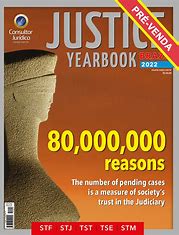Out-of-court agreements gain ground as businesses focus on changing their debt profiles
08/30/2022
/i.s3.glbimg.com/v1/AUTH_37554604729d4b2f9f3eb9ad8a691345/internal_photos/bs/2022/p/a/AoSvAjQeiL507cA5tblw/30emp-100-divida-b1-img01.jpg)
Cemig’s building — Foto: Divulgação
Companies are intensifying talks with financial consultants and law firms specializing in restructuring to renegotiate their debts with creditors, sources say. With the increase in the cost of capital due to the high interest rates and limited supply of funds in the market, negotiations for out-of-court agreements are gaining ground with a focus on changing the debt profile of these companies. One negotiation involves Pif Paf, a well-known food brand in Brazil, which has analyzed going public in 2021, but currently faces a difficult financial situation.
Companies from sectors as diverse as food, textile, civil construction, energy, retail, and services are seeking mediation with creditors. The negotiations gained more strength especially after the second quarter, with the pandemic under control, but in a scenario of escalating interest rates, exchange rate still at high levels and increased financial expenses.
“The crisis scenario generated at the beginning of the pandemic mitigated the problem for many companies, with creditors willing to renegotiate longer terms. But this scenario has been changing in recent months, with the environment of higher interest rates, inflation, and possible recession,” said Luiz Galeazzi, with the financial restructuring company Galeazzi Associados.
According to Eduardo Wanderley, a partner with the restructuring and insolvency team of BMA Advogados, many creditors gave “a break” of one to two years in collections. “This is because at that time, if you tried to offer the debt security in the market, there wouldn’t even be a buyer. And there was a scenario of banks with more liquidity, with the measures taken by the Central Bank in 2020. We even thought that renegotiations would see a boom, but it didn’t work out that way,” he said. “There are signs that the market may be entering at this moment. We feel was that this would come back between this year and the next, especially.”
“Last week we were approached by a large service company in search for restructuring. Those who failed to do so before are suffering now. Those who restructured their debts and now need to go back to the market to roll over [debt] face very expensive credit. And this will create a more difficult scenario,” he said.
Eduardo Gallardo, a lawyer with professional services firm Alvarez & Marsal, says inquiries from companies seeking restructuring have increased. “With escalating interest rates, inflation and the risk of recession ahead, the bill starts to arrive and affects companies that can’t increase revenue.”
Fish producer GeneSeas, controlled by private-equity fund Aqua Capital, is in intense talks with creditors to avoid filing for protection from creditors, sources say. From January to June, the company’s revenue reached R$210 million, while the debt in the same period totals R$220 million. At this moment, the group is negotiating with creditors, a stage that expires at the end of September.
Power companies Cemig and Santo Antonio are also in talks with banks to change their debt profiles, sources familiar with the matter say. Both companies have invested to expand in recent years, but their complex shareholder structures involving several shareholders delay negotiations.
As for meatpacker Pif Paf, the company’s lawyers informed the courts in July that the group had opened mediation with creditors. Last month, the company, with R$2.7 billion in sales in 2020, filed an injunction to prevent the blockage of R$30 million from its accounts by China Construction Bank. The group says that access to those funds is key and, “as the injunction is granted and depending on the success with the Chinese bank and any other creditors, [Pif Paf] may, after 60 working days, and if necessary, file for judicial recovery,” says the request.
In a note, the group said that it made acquisitions through loans, in a structured way, but due to the current economic scenario of “sudden and accentuated rise in interest rates,” it hired G5 Partners “to develop a strategic plan focused on reducing the debt and thus ensure the maintenance of the company’s financial health.” The company also said it “maintains a constructive and transparent relationship” with the banks.
On the subject of judicial reorganization, cited in the injunction, the company said there is no ongoing process or intention to do so.
Ronaldo Vasconcelos, a partner at VH Advogados law firm and a professor at Mackenzie, sees an increase since March in collective out-of-court settlements, those closed through mediations with companies and creditors. “We saw [this movement] very clearly in the real estate industry, and, to a certain extent, in textiles,” he said. “In the construction sector, it even looks contradictory to see construction works in capital cities like São Paulo. That happens because these guys are building now based on past, low interest rates, and some of them renegotiated the terms in 2020. But now they must foot this indebtedness without getting new lines in more reasonable conditions.”
Law firm Moraes Jr. Advogados saw an increase from six months ago and is currently negotiating mediations with creditors of two meatpackers from Minas Gerais and Pernambuco, as well as food makers. “We are trying to reach an agreement, but it is very difficult because when you approach creditors for a negotiation, the creditor often asks to block stocks or something along these lines, which complicates the talks,” said lawyer Odair de Moraes Júnior.
According to him, the meat industry has revenues in dollars, which is a “natural hedge.” Yet, meatpackers made high investments to meet an export demand that did not materialize at the expected pace.
Another case involving his law firm is that of Pantera Alimentos, an Itu-based food company that owns five brands. The company had been seeking new lines since 2019 before it managed to close credits with banks and credit rights funds in the following year. Despite that, the leverage ratio grew fast, and the company now faces a R$97 million debt pile. “We started a mediation, but there was no agreement, so we had to file for protection from creditors,” he said.
“We expect this to grow in the second half of the year because election years translate into a worse economic scenario, and the Selic [Brazil’s key interest rate] will still be high in 2023. Also, a snowball has formed in many businesses, and it must be solved.”
This happens in parallel with the need for companies to put certain assets up for sale in an attempt to reduce their leverage ratios. “These are negotiations less for matters of opportunity and more because of collections,” said Thiago Giantomassi, head of banking and finance at law firm Demarest Advogados.
According to the law firm, the search of advisers in restructurings exceeds the numbers for 2020 and 2021, but is lower than that seen in the 2015 recession. “The difference to 2020 is that questions were more theoretical back then. Now companies include more practical background aspects, and they think they will not be able to solve the situation without mediation,” said Guilherme Bechara, a partner with Demarest.
Diogo Berger, head of debt restructuring at Santander, said that the current scenario is similar to the period 2014 and 2016 in terms of rising interest rates. At that time, default was more widespread. However, he now sees a benign scenario for companies, especially the large ones, as they raised funds in the capital markets. “The past crisis was very severe, with banks creating internal structures to serve these companies.”
Mr. Berger said banks’ teams grew. “Since then, the financial system has a way to work preemptively on the most complicated cases and they are able to better organize disputes [between creditors], who want to receive first.”
GeneSeas said in a note that it “faces a challenging situation, common to the entire animal protein market, amid a complex macroeconomic scenario impacted by a large increase in interest rates, high energy and commodity prices and increased likelihood of a global recession.”
Also according to the company’s note, “GeneSeas has been working on a friendly renegotiation plan with its entire production chain, through a process focused on cost reduction and the implementation of management measures that promote operational efficiency and help strengthen cash flow. The company’s goal is to maintain its operating capacity, offering quality products to customers and seeking to preserve as many jobs as possible.” Aqua Capital declined to comment.
Cemig and Santo Antonio also declined to comment.
*By Adriana Mattos, Mônica Scaramuzzo — São Paulo
Source: Valor International


/i.s3.glbimg.com/v1/AUTH_37554604729d4b2f9f3eb9ad8a691345/internal_photos/bs/2022/Z/3/WU1tlUSTeujcNZTXGBNA/250822fiamma4.jpg)
/i.s3.glbimg.com/v1/AUTH_37554604729d4b2f9f3eb9ad8a691345/internal_photos/bs/2022/h/x/0djcJCThOADjYqA21ixg/220219santos075.jpg)
/i.s3.glbimg.com/v1/AUTH_37554604729d4b2f9f3eb9ad8a691345/internal_photos/bs/2022/Z/G/Pay5erQcSy7zlQpJEXHg/26rel-110-subseguran-f7-img01.jpg)
/i.s3.glbimg.com/v1/AUTH_37554604729d4b2f9f3eb9ad8a691345/internal_photos/bs/2022/u/Q/z8QcIcSVAB8WoBFCWkog/050822clementefariajr-16.jpg)
/i.s3.glbimg.com/v1/AUTH_37554604729d4b2f9f3eb9ad8a691345/internal_photos/bs/2021/P/I/IFgA9ZRZ6o4wAKmRsZPw/08fin-100-bancos-c5-img01.jpg)
/i.s3.glbimg.com/v1/AUTH_37554604729d4b2f9f3eb9ad8a691345/internal_photos/bs/2022/b/z/w0Ts5pRviDfdBx2ZXTfQ/26emp-100-calote-b1-img01.jpg)
/i.s3.glbimg.com/v1/AUTH_37554604729d4b2f9f3eb9ad8a691345/internal_photos/bs/2022/9/V/8BReeMS2yrN0KuPqY0Mg/em-divida.jpg)

/i.s3.glbimg.com/v1/AUTH_37554604729d4b2f9f3eb9ad8a691345/internal_photos/bs/2022/M/5/H8V17dS86oNAVtWTtT1w/25fin-100-bredesco-c6-img01.jpg)